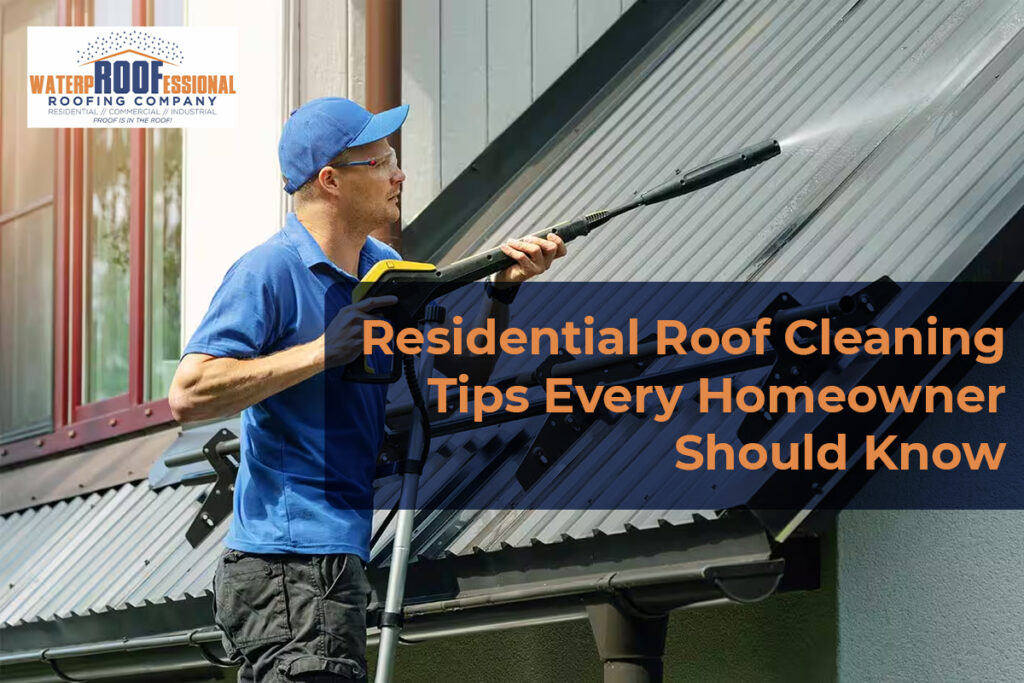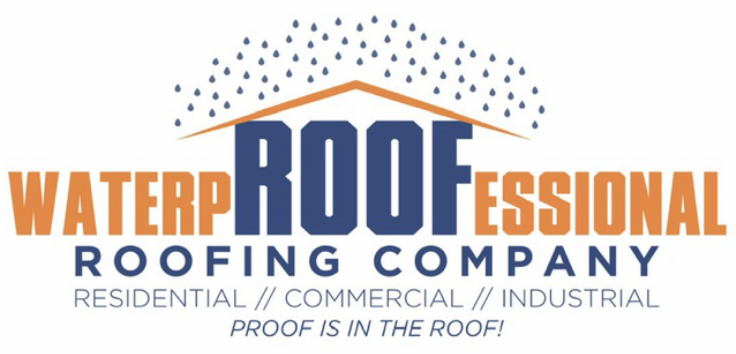A clean roof doesn’t just look good—it protects your biggest investment. Over time, dirt, moss, algae, and debris can compromise the strength and appearance of your home’s roof. These elements can lead to water damage, structural decay, and even higher energy costs if left unchecked. Whether you’re looking to boost curb appeal or extend the lifespan of your shingles, routine residential roof cleaning is essential. In this blog post, we’ll cover everything homeowners need to know—from identifying signs of trouble to choosing the right cleaning method and professional help.
Let’s dive in and make sure your roof gets the attention it deserves.

Why Roof Cleaning Should Be on Every Homeowner’s Checklist
Most homeowners think of roof maintenance only when there’s a leak or visible damage. But by then, it’s often too late. Residential roof cleaning plays a vital role in preventing expensive repairs and prolonging the life of your roof.
Moss, algae, and lichen not only look unsightly, but they can eat away at your shingles over time. Regular soft wash roof cleaning and roof moss removal can stop these problems in their tracks, avoiding the need for full replacements.
Recognizing the Signs: When It’s Time to Clean Your Roof
Before you grab a hose or hire a pro, it’s important to know when your roof is asking for help. Signs of roof algae removal needs might include dark streaks, green moss patches, or uneven discoloration.
If your shingles look worn or are curling, or if debris has piled up after a storm, these are also red flags. Not all signs are visible from the ground, though—consider a roof inspection every 12–18 months to be safe.
Soft Wash vs. Pressure Washing: What’s the Best Method?
Not all cleaning methods are created equal. Soft wash roof cleaning uses low-pressure water combined with eco-friendly cleaning agents to gently lift dirt and organic growth from shingles.
On the other hand, roof pressure washing uses high-pressure water jets. While this method can be effective on certain roofing materials, it can also cause damage if used improperly, especially on older or delicate shingles. When in doubt, consult with professional roof cleaning contractors who understand your roof’s unique needs.
How Much Does Roof Cleaning Cost?
Roof cleaning cost depends on several factors: the size and slope of your roof, the extent of moss or algae growth, and the type of cleaning method required. On average, homeowners can expect to pay between $300 and $700 for residential roof cleaning.
Hiring a reliable contractor near you, especially one with experience in soft washing and moss removal, is worth the investment. Look up “roof cleaning near me” and compare quotes, reviews, and services offered.
DIY Roof Cleaning Tips (But Be Cautious!)
If you’re a hands-on homeowner, you might be tempted to tackle the job yourself. For simple jobs like debris removal or light algae buildup, a DIY approach can work, with the right precautions.
Use a garden sprayer with a gentle cleaner made for roofing. Avoid bleach mixtures that can damage your plants or roof structure. And most importantly, use fall protection and never attempt to walk on a wet roof. When in doubt, leave it to the pros offering roof cleaning services.
Preventing Future Build-Up: Keep That Roof Clean Longer
An ounce of prevention is worth a pound of repair. To avoid constant cleaning, trim overhanging branches to reduce shade and debris. Clean gutters regularly so water flows properly and doesn’t back up onto your roof.
Installing zinc or copper strips near the roof ridge can also help fight algae growth. These metals naturally prevent moss and algae when rainwater runs over them. It’s an affordable and low-maintenance upgrade that extends the time between cleanings.
Hiring the Right Roof Cleaning Contractor
Choosing the right company is crucial. Look for roof cleaning contractors with solid reviews, transparent pricing, and proper licensing and insurance. Ask if they specialize in soft wash or offer comprehensive roof cleaning and maintenance packages.
Don’t forget to ask for references or photos from past jobs. A great contractor will help preserve your roof, not put it at risk. Bonus if they also offer services like residential roof installation or commercial roof solutions, which means they understand roofing systems from top to bottom.
Connecting Roof Care with Other Home Maintenance
Your roof isn’t an isolated system—it connects to other parts of your home. Clogged gutters, damaged siding, and poorly ventilated attics can all lead to roofing issues. Consider scheduling an inspection during your next home maintenance cycle.
And while you’re at it, check out related services like clean-outs in Champaign or exterior siding repair to protect your home from the outside in.
Final Thoughts: Don’t Skip Roof Cleaning—Your Home Deserves It
Neglecting roof cleaning might seem harmless at first, but the long-term consequences are costly. From water damage to structural decay, your roof needs routine care just like your HVAC or plumbing system. Whether you choose to do it yourself or hire a professional, roof cleaning is a non-negotiable part of homeownership.
So grab your maintenance calendar, mark a date, and give your roof the attention it deserves—your home (and wallet) will thank you later.
FAQs About Roof Cleaning
Q1: How often should I clean my roof?
Most roofs benefit from cleaning every 1–3 years, depending on your climate and surrounding vegetation.
Q2: Is roof cleaning safe for all roof types?
Soft washing is generally safe for asphalt shingles, tiles, and metal roofs. Avoid pressure washing delicate surfaces unless advised by a pro.
Q3: Can moss damage my roof?
Absolutely. Moss retains moisture, which can lead to shingle deterioration, rot, and even leaks over time.
Q4: What’s the difference between algae and mold on the roof?
Algae leaves black streaks, while mold appears green or brown. Both can cause damage and should be removed professionally.
Q5: Will my homeowner’s insurance cover roof cleaning?
Usually not, unless it’s tied to damage after a storm. However, regular maintenance can help with future insurance claims.


